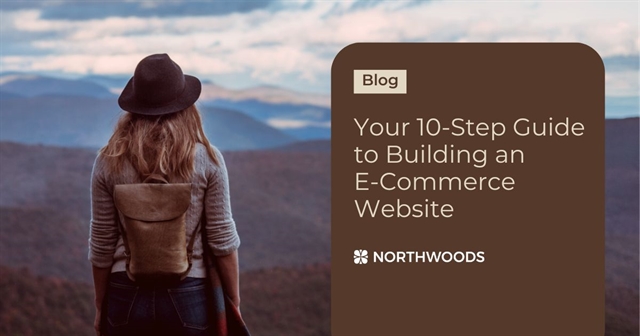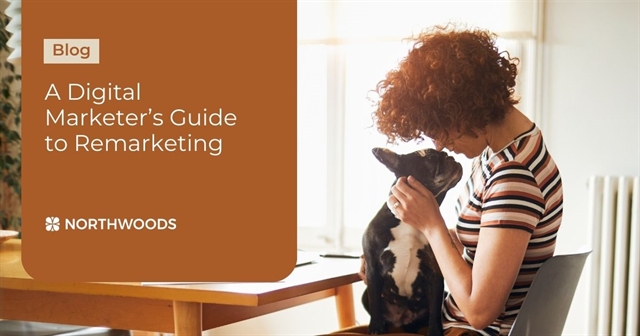By Northwoods Team
October 23, 2023
6 Minute Read
Boosting ad spend on a hunch can work – up to a point. Even thoughtless spending can have some return. But a thoughtful, nuanced strategy, tempered by a close eye on Return on Ad Spend, is far more likely to set up your business for long-term success.
Like so much in marketing, ROAS is all about measuring results, revealing failure, and locating your advertising effort precisely on the spectrum between the two. ROAS is a key performance indicator in the purest sense. It tells whether or not you’re succeeding and to what degree. That knowledge helps you craft advertising that connects your audience to your sales funnel.
Here’s how to make it all happen.
Strategies to Increase Your ROAS
Audience Targeting
Take the time to learn about your audience. Spending ad dollars on “whomever” wastes time and money. Create custom groups on your advertising platforms to target specific potential customer types.
In Google Ads, you can get granular down to detailed demographics, affinity segments, in-market segments, and life events. You will want to utilize Optimized Targeting to help you reach the right customers and to expand your reach to new customers.
Depending on your business, once you narrow an audience, you can geo-target that group to specific locations that are relevant to your product. This hits the right areas for local, family-owned stores and for franchises across states. Many of these features are available across social advertising channels and other major search engine advertising platforms. If you are in e-commerce, you likely want to target more broadly, but over time you'll learn if there are areas you should exclude from your targeting.
Once your campaigns go live, closely monitor their performance. When you identify strong-performing audiences that consistently deliver exceptional results, it's smart to increase your bids for these audiences. Conversely, decrease bids on poor performing audiences. Allocate a larger share of your budget to audiences with demonstrated propensity to engage and convert with your business.
Keyword Research
Once you've identified your audience, it's time for keyword research that will help draw them into the funnel. Start by conducting a competitive analysis of your competitors' ads, a crucial step in understanding the landscape. Also, start creating a list of keywords your believe people are using and search them to see the search results.
Then start using tools to find more, we recommend using Google Keyword Planner or SEMrush for this purpose. Both of these tools are excellent for determining keyword competitiveness, density, traffic potential, and associated costs. While Google Keyword Planner is a widely accessible option, SEMrush, as a more premium tool, offers in-depth insights into keywords and sophisticated research planning options.
Negative keywords in Google Ads are a strategic tool that can significantly enhance your Return on Ad Spend (ROAS). By excluding specific keywords or search terms that are irrelevant to your product or service, you prevent your ads from appearing in searches that are unlikely to convert. This precision in ad targeting ensures that your budget is allocated to more qualified leads, reducing wasted ad spend and improving the efficiency of your campaigns.
Negative keywords help filter out uninterested or unprofitable traffic, allowing you to concentrate your resources on the right audience.
Note: You can easily drive yourself down the rabbit hole of analysis. A high-level overview once a month on keyword volume and spending is a good rule of thumb.
Creative, Intriguing Ad Materials
Thoughtfully designed and captivating ad creative can go a long way toward drawing customers into your pipeline. Imagery and video help to sell your product or service. Many major advertising platforms limit or restrict creative that is entirely text-based. Tailoring ad sets to different profile groups will significantly boost your return.
When it comes to crafting compelling ad copy, the choice of language is pivotal. Your ad language should resonate with your target audience and align with the keywords you've identified. It's essential to create ad content that not only grabs attention but also communicates your message effectively.
Tailoring your ad language to address your audience's pain points or needs can significantly impact the success of your ad campaigns
Data Is Your Friend
Use all available data. At the bare minimum, set up GA4 – and do it right – to get invaluable insight into your site operations. (Our team can help set up your GA4 instance properly.)
From your advertising platforms of choice, place the appropriate tags or pixels to track the success of your ads. Your click-through rate (CTR), conversion rate, and cost per acquisition (CPA) are excellent starting metrics. They tell you which ads are working and which aren’t, so you know which messages to boost, which to leave behind, and where to concentrate your ad spend.
Start Bottom of the Funnel and Work Up
Starting at the bottom of the funnel with a focus on audiences who are well-aquainted with your brand or products can be a strategic move to significantly boost your ROAS early in your campaigns. You are, after all, more likely to convert high-intent customers who are ready to make a purchase.
To sustain and grow this success over time, you must eventually add campaigns higher up the funnel to capture and nurture potential customers earlier in their decision-making process.
Page Optimizations
Page optimization has two parts, both too often overlooked.
First, optimize for a mobile experience. According to Statista’s Market Insights, 60% of global sales for e-commerce take place via a mobile device, accounting for $2.2 trillion in sales. A poor mobile experience will quickly lead to lost sales and send cart abandonment rates soaring.
Second, place great calls to action (CTAs) on your click-through landing page. All the work of creating compelling ad materials goes for naught when a customer clicks through to your landing page and poof! It’s a bland page of text with a little button to buy. Not very enticing! Create a landing page tailored to what you’re promoting and ensure it’s visually appealing.
Run A/B tests on your landing page. Sometimes A/B can test two great ideas and little design tweaks (centered on the CTA). Run it for up to a month, depending on traffic volume, compare results, then launch the better of the two pages.
Invest In Your Customer
Once your ad strategies have established a good customer base, and sales funnel, focus on raising Customer Lifetime Value (CLV). Current and past customers are more likely to repeat buy than new visitors are to make initial purchases. Make sure to focus on those established customers and build their trust further. Nurture them. Keep them coming back for more.
Invest in email marketing campaigns, stress the importance of great customer service with your employees, make upsell top of mind, and consider starting a loyalty program. Flash sales and discount programs can drum up traffic, especially during seasonal low volumes. Make that abandoned cart roll again. Remarketing campaigns can be great tools to draw customers back into the sales funnel.
If you truly understand your CLV you can boost your true Google Ads ROAS. This can lead to decisions to invest more in areas that have better value.
The e-commerce world can be daunting, as a wide range of factors combine to drive success. Careful planning, data-driven decision-making, and a great product or service will set you on a good path, but it requires expertise and effort.
Ready to get started with an e-commerce advertising campaign, or want an expert opinion on how to improve your current ads? Our team can help! Reach out to us today.
Related Blog Posts

With the e-commerce industry anticipated to top $1 trillion in revenue and account for 20% of all U.S. retail sales in 2024, it's critical for e-commerce businesses to build effective, user-friendly websites. Get started with our 10-step guide!

Ensure your next Google Ads campaign is a success! Follow our checklist for a well-organized, best-practice approach.

Leverage remarketing to re-engage with website visitors who don't convert in order to maximize engagement and revenue.